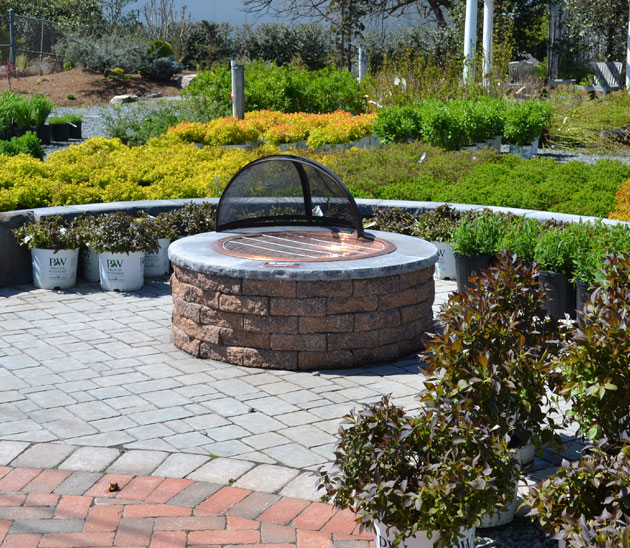
Interlocking concrete paving – aka, pavers – revolutionized the landscape industry. Natural stone is beautiful but it can have variations in color and quality.
Pavers are a manufactured product, which allows for strict quality control throughout the manufacturing process. Recent advances in molds and color have taken a utilitarian product and turned it into a thing of beauty.
How can pavers be used in the landscape?
Patio and walks — the most common application for paver is residential patios and walks. Pavers can survive the harshest winters without heaving or cracking with frost.
Our designers love to use pavers because they come in a wide range of styles. Some pavers have the same size and shape as bricks. Others are pavers that look like cobblestones and pavers that look like slabs of stone. There are even pavers now that look like wood planks, travertine, and irregular flagstone! This is a fantastic time to do a paver patio or walk because it can look like almost anything you want.
Driveways and parking lots — Concrete has what we call “compressive strength,” which is its ability to carry heavy loads.
When concrete is mixed, poured into a mold, and cured under the controlled conditions of a manufacturing facility, it has amazing compressive strength. Ask your landscape designer what paver is best for your driveway project.
Permeable pavers — As we’ve learned more about how to protect the environment, permeable pavement has grown in popularity. With permeable pavers, water that would have run off a standard patio or driveway simply percolates between the pavers and return to the groundwater. The percolation cleans the water of impurities. Permeable pavers can be a responsible way to manage stormwater in your landscape.
To see some of our completed walkway projects, please visit our Walkways Gallery.
If you’re ready for a new paver patio, walk, or driveway, contact us today to schedule a consultation.